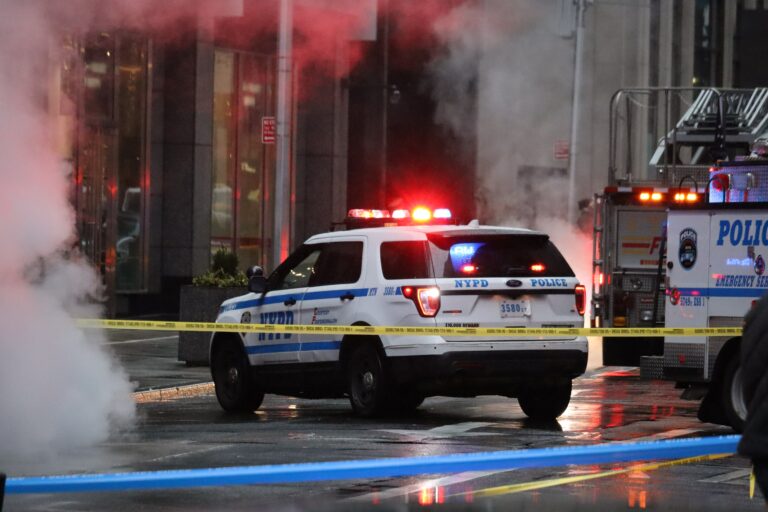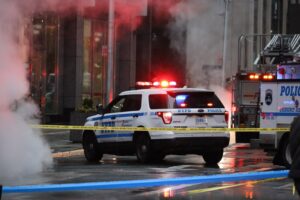A new U.S. Secret Service report adds to a growing body of research documenting common behavior patterns among mass attackers. It also highlights the potential for community intervention, both broadly and on a small scale, to make a real difference.
The National Threat Assessment Center’s (NTAC) report published Wednesday analyzed 173 “mass attacks”—defined as incidents in which three or more people, not including the attacker, were harmed in public or semi-public places—between 2016 and 2020. The report uncovered many patterns linking various attackers to one extent or another, but what most perpetrators had in common was striking.
More than three-quarters of the individuals who committed mass attacks exhibited concerning behaviors or shared alarming communications before carrying them out. Nearly two-thirds exhibited behaviors or shared communications that were so concerning “they should have been met with an immediate response,” according to the researchers. Roughly 60 percent of the attackers exhibited behavior that caused others to fear for the safety of the attacker, themselves, or the broader public.
Often these concerning behaviors manifested in the form of expressed threats, actively making plans to carry out an attack, more minor acts of violence, or harassing behaviors.
For anyone who has spent time following the news coverage of these all-too-frequent incidents, the study results likely won’t come as much of a surprise. Time after time, it seems reports come out of the woodwork only after an incident has already transpired, revealing troubling details from an attacker’s past that, in hindsight, should have made it all too clear what was bound to happen.
But this new report makes clear that such perception is more than just anecdotal. The data bears it out. Mass attackers do, in fact, routinely exhibit a pattern of troubling behaviors that are generally identifiable by others, whether it’s family members, friends, classmates, employers, coworkers, or law enforcement.
That means any attempt to interrupt those patterns, either by reporting them to the proper authorities before they manifest further, or connecting the troubled individual with supportive services, has the real potential to prevent future attacks.
Indeed, NTAC’s researchers recommended “developing community violence prevention programs” to help curb the scourge of mass violence. Some strategies the agency identified include for communities to “facilitate bystander reporting” and to respond appropriately when concerns are received. They also encouraged public safety officials, businesses, and schools to work to establish violence prevention plans to “identify, assess, and intervene” with individuals who may pose a threat of violence.
Such a solution also has the advantage of being tailored to the most data-driven factors linking most attacks. Other commonly proposed solutions, like bans on so-called assault weapons (mostly rifles like the AR-15), miss the mark by failing to address the reality of most incidents, to say nothing of the political backlash they engender.
The NTAC report also found that not all mass attacks involve firearms; even among those that do, handguns overwhelmingly represent the weapon of choice. This is corroborated by other studies looking at the topic. For example, researchers with the Violence Project found that eighty percent of all mass shootings (where four or more are killed) dating back to the 1960s involved a handgun.
And it’s not pure theory that solutions like establishing bystander reporting protocols and crisis intervention programs tailored toward addressing common patterns can work. There is evidence that when properly implemented, they can and have successfully stopped mass attacks from occurring.
A 2022 study from researchers with the RAND Corporation examined 640 mass attack plots between 1995 and 2020. The researchers found that the perpetrator’s plan was discovered in half the cases before it could be carried out, preventing the intended carnage. In two-thirds of thwarted plots, the attacker’s plan was uncovered by a tip from a member of the public.
As recently as last July, a tip to police called in by a member of the public was credited with thwarting a planned mass shooting in Richmond, Virginia, during an Independence Day celebration. Just a few days prior, another mass shooting incident was likely averted in San Antonio, Texas, after the coworker of a potential shooter tipped off police.
These community-based solutions will likely not be satisfying to all. They also won’t prevent all future attacks. Indeed, the NTAC report acknowledges that nearly a quarter of all attackers studied did not exhibit any concerning pre-attack indicators before committing their crimes. It also noted there is no specific profile for attackers, and potential warning signs won’t lead to mass violence in the vast majority of situations where they do show up.
But the NTAC recommendations have the advantage of directly responding to the most common theme identified that links most attacks to one another. Accordingly, encouraging bystander and community-based intervention seem to be the most promising path forward to preventing more mass attacks.






